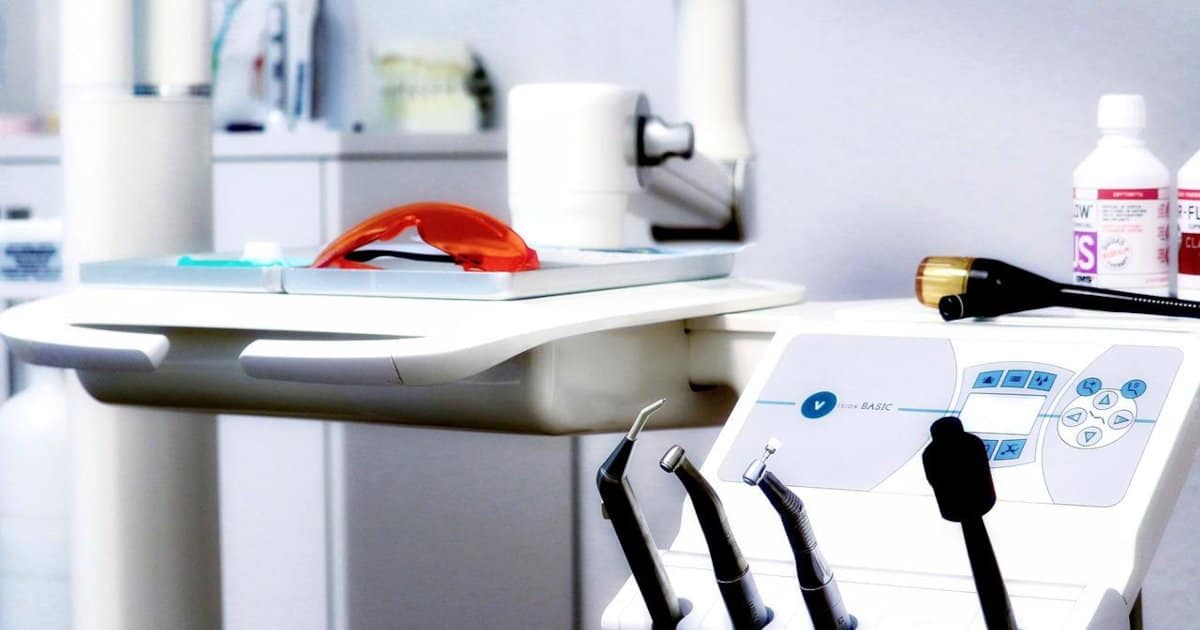Many disruptive innovations taking place in the medical field will have a massive impact on dentistry also. These technologies will provide an excellent opportunity for dentists to practice their specialty. And the patients can take care of their teeth on their own.
New technologies like genetic engineering, artificial intelligence, smart toothbrushes, and other innovative measures would completely transform this field.
If you are a dentist, you should consider some of the future technologies to survive and thrive in the growing industry.
Here, we have researched and found some exciting disruptive technologies that will shape the future of dentistry.
Without waiting much, let us get started.
7 Future Technologies That Would Transform Dentistry
There are various technologies that can transform dentistry.
Here is a list of the future technologies that would completely change the working pattern of dentists in the future.
1. Teledentistry
Teledentistry has evolved and become quite popular for consultation with dentists. Besides consultation, it also allows dentists to provide care remotely.
In addition, teledentistry is suitable as an educational tool and very popular among dentists for inter-professional communications.
The adoption of teledentistry has made referrals streamlined and offers numerous other advantages both for the dentists as well as the patients. Some of these advantages include:
- Emergency Assessment: It can be effectively used in the triage process, in which the dentist can finalize whether any emergency dental care is required or not. It helps dentists to free up emergency in-person appointments, saves time, and focus his/her attention on people who need them for any emergency treatment.
- Faster Pain Relief: If a patient is feeling intense pain after dental surgery, then he/she can get pain relief or antibiotics from their dentists even out of hours.
- Keeping Track of Treatments: The dentist can keep track of the patient’s treatment cost-effectively. It is necessary to keep track of tooth movement during orthodontic care.
- Safety: Teledentistry can be optimally used to improve the dental health of patients while at the same time delivering specialized care to those who need it.
2. Artificial Intelligence
Currently, dentists can use many software that gives them insight into their patient condition and helps them make accurate and informed decisions.
With time, the use of this kind of software will increase in the coming years, and you will see them integrated with AI-based algorithms for high-quality service. With enormous data generation and evolving healthcare AI, you will see a higher stage of digitization in dental medicine.
Experts related to dental medicine predict that soon smart algorithms with AI will be a part of the healthcare system. It would be used to analyze data, and research various treatment techniques.
Based on the analysis, it can offer highly personalized diagnostic and therapeutic recommendations to patients. The easy accessibility of genomic data will help AI and deep learning to have a comprehensive understanding of every patient’s system. It will, in turn help provide highly personalized care.
Some of the essential areas in which AI-based algorithms can help dentists analyze dental conditions are as follows.
- Accurately analyze the number of immune cells to oral cancer. It will help you investigate the spread of the cancer cells, thus giving an accurate prediction of the chances of survival.
- Using neural networks, dentists can find and analyze dental decay and periodontal diseases by studying the radiographs.
3. Virtual Reality
Virtual reality is another field that would see a lot of action, especially for the students who are studying dentistry.
Virtual reality would allow them to learn dentistry skills in a virtual environment.
In short, students can view a surgeon who is performing the surgery in another city or country. In this way, students can learn intricate surgery skills from their homes.
4. CAD Design and 3D Printing
3D printing has evolved dramatically in the last few years and has now become a crucial part of healthcare practice. It is increasingly used in dental labs.
The computer-assisted design (CAD) and 3D printing (a part of computer-assisted manufacturing) have completely changed this sector.
Earlier, if the dentist had to make a crown, he/she had to first make a mold of the tooth and then based on the mold, make a temporary crown. After that, the dentist has to wait till the dental laboratory makes the permanent crown for the patient.
However, using the CAD/CAM technology, the dentist drills the affected tooth and prepares for its crown by taking a picture with the computer. This picture is transferred to a 3D printing machine, wherein the crown is manufactured right there. In this way, it saves precious time which would have otherwise been spent on manual modeling of the crown.
The 3D printers are nowadays highly specialized and can be used to produce high-quality aligners, retainers, orthodontic models, surgical guides, or any other dental equipment faster and more accurately. It has improved efficiency and helped in reducing the overall cost.
5. Intra Oral Camera
One of the problems that dentists face is seeing the condition of a patient’s teeth, especially those that are rear. It does not matter how wide you open your mouth or even if the dentist use mirrors, it is hard to view the rear tooth.
It greatly inconveniences the patient and also limits the view of the dentist which makes an accurate prognosis of the condition of teeth challenging.
Intraoral cameras are the perfect solution to this problem. These cameras use a powerful liquid lens technology that almost works like a human eye. Using this tool, the dentist can get highly detailed and accurate images of the view inside the mouth of the patient. It allows them to make an informed decision regarding the treatment.
6. Regenerative Dentistry
As we grow old, our teeth begin to fall, and dentists replace them with prostheses. However, regenerative dentistry with self-healing teeth and biological therapy has ensured that damaged teeth can heal by themselves. In this process, a special type of dental filling is used that helps the teeth to heal themselves by stimulating stem cells that further promote the growth of dentin, which is a crucial ingredient of our teeth.
This revolutionary technology ensures that patients can regrow their teeth, which in turn, eliminates the chance of root canal requirement.
7. CRISPR
It is a revolutionary genome-editing method that helps dentists find, isolate and turn off genes associated with oral cancer. This technique is also used to change the functioning of bacteria that are responsible for the formation of plaque. Further refinement in this technique will ensure that dental caries would be a thing of the past.
Conclusion
New innovative technologies in dentistry would ensure faster and painless treatment, which would remove the phobia of making a trip to its dental clinic.
Furthermore, new tools will help the dentist undertake complicated surgeries with a high chance of success that traditional methods cannot match. Modern technologies have helped dentists to assess the condition of their patients well in advance and based on it suggest an optimum treatment procedure.
As a dentist, you can utilize the latest technologies to provide enhanced treatment to patients. However, first you need to attract patients first to your clinic. For the same, you should consider dental web design and create a unique dental website.
By building an innovative dental web design, you have an opportunity to target a broader audience. Moreover, you can display all the services you provide on your website with great visuals to attract patients. It will ultimately help you generate good revenue.

An entrepreneur, an IT professional. Tech geek. Founder & CEO at Guru Technolabs – Globally Trusted Web & Mobile App Development Company. Loves writing about new technologies and the latest trends in the IT field.
